Written by: Kôji Suzuki

I admit I was an ignorant teenager. It was Saturday 15th of February 2003 in London. And as the largest march in Blighty’s history raged outside I was sat in the cinema with friends watching the US remake of Japanese scareathon Ringu. I absolutely loved it. There was so much mystery and intrigue, plus having not seen the original I don’t exaggerate when I say the grand finale made for one of the most harrowing experiences I’ve ever had at an auditorium. Older and wiser, I’ve revisited both sets of films a number of times and watched a number of poorly made spin offs. Yet unit recently I’d never bothered with Koji Suzuki’s source material. Fortunately a wet and cold night prompted me to finally start reading. Now, having just closed the last page of the final book, I feel like I’ve been on a hell of a journey. It’s a journey that starts within a single house in Tokyo, then goes all through the countryside, round seaside towns and to a desert in North America before finishing outside the world as we know it. This may not sound like The Ring people will know and love. Yet in its scale and innovation this horror/ sci-fi hybrid will transfix you in a way no telling has before.
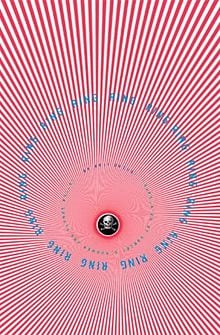
Ring (1991):
Much of the first book will be familiar to film-watchers, with it following the same basic plot. Following a thrilling, and deeply creepy introduction, an initially sceptical journalist tries to get to the bottom of an unexplainable set of deaths. Following clues to a cabin in the hills, they watch a mysterious videotape depicting a mix of violent and abstract imagery based around a teenage girl, a volcano and a womb. From here they’ve got a week to get to the bottom of things before they die, like all those that watched before, at the hands of the telekinetic Sadako Yamamura. However, the first big thing movie fans will notice is the absence of a young mother struggling to juggle a career, her child and concerns about a curse throughout. Instead our leads are the cold but curious middle aged Kazuyuki Asakawa, and his misogynistic, borderline-psychopathic acquaintance Ry?ji Takayama. Between their streams of whisky and misanthropic conversations about the human race, they set about solving this supernatural, murder mystery. The second big thing movie fans will is how little of the film’s most memorable iconography actually appears here – with Nakata having brought much to the table. The pacing is slow and ponderful, with the narrative focusing on banalities as much as things that go bump in the night. There’s a real sadness about the places the characters visit and an interesting detachment between them and the readership that allows it to function simultaneously as a thriller and a mediation on the role of traditional superstition in a modern Japan. The backing story, when it gets introduced, is unnerving and perfectly blends the old and the new to create an effective familial chiller. However, a serious limitation is in the written medium’s suitability at capturing a visual one. Inevitably the scenes with the video fair worse than they do in the film – something not helped by a dodgy westernised translation. The author also has a tendency to puncture tension by restating things readers will already be aware of. In particular, as the investigators find out more about their foe Suzuki’s handholding suggests a lack of trust in either himself as an author, or the smarts of his readership, with page after page reiterating who Sadako was and what she wants. Consequently when the novel reaches its epic climax it feels less like the resolve of an organic piece of work, and more like the completion of a frustratingly simple jigsaw puzzle. Still, as Asakawa thinks about a possible future it’ll be only the most difficult to please that are not tempted to read on and find out if it comes true.
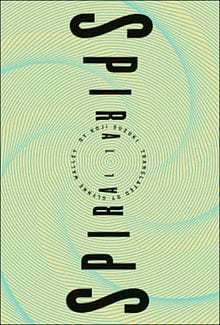
Spiral (1995)
It’s all new territory from here – save for the unremarkable TV movie Resen, the second book Spiral has gone entirely ignored by movie makers. This is a shame as it’s very maybe the most complete of all Suzuki’s novels. Taking up where Ring left off, this sequel tells the story of coroner, Ando Mitsuo, asked to investigate the death of an old classmate that finds him investigating the killer video. However, the nature of its antagonist is changing, and following a familiar enough first act the novel evolves into a hardcore medical thriller about genes, adaptation and a beautiful stranger. Though the first novel flirted with this angle, Sadako’s powers were limited to a spell. Here they are more akin to a virus, with much of the second act reading as Stephen King meets an idiots’ guide to biology. Despite how dull this may sound, it is nonetheless a well-paced and tense piece of writing that sees the series effortlessly transition from horror into science fiction and back again for a nerve-racking third act. Sure there are some weaknesses – Ando fails to be as engaging as the underused returning cast, meaning the novel works of the strength of its plot vs. its characters. Furthermore, because it was designed to stand alone then Suzuki dedicates a lot of time into summarising the contents of Ring to the point that Ando spends much of the first 100 pages finding out what happened a book ago. Yet when this one ended I was genuinely awed. The closing sections are incredible in their apocalyptic scale, unpredictability and foreboding as it takes on memetics and the spread of information in the digital age. And as per its predecessor it ought to leave readers hungry to find out what happens next.

Loop (1998)
This one’s going to divide readers. Against a near future backdrop, Loop tells the story of a young medical student Kaoru Futami as he attempts to prevent the spread of a deadly disease that’s effecting all forms of organic life: plants, animals and people. After a bloated opening section, that delves into his complicated yet frustratingly unrealistic family life, circumstances line-up so that our protagonist has to look into his father’s past: namely a failed science project known as Loop. To say more would be to risk serious spoilers, though if the first 150 pages seem disconnected from the previous book stick with it. For the second act sees some revelations which will change how you look at the series up until that point. Sure, the usual condescending narrative style is back in droves with far too much of the content being designed to cater for new readers. Yet the imagination of the twists, plus the book’s epic scale, excuse these incessant reminders about who everyone is and what they’ve done before. The science is more extensive in this book than the last, though this doesn’t matter when the concepts themselves are so cool. In particular it takes on the nature of reality, personal identity and the origins of life. Furthermore, the love story, with the infected single mother Reiko gives the series an emotional gravity it has previously lacked. However, all of this grandiosity may detract from the intimate ghost story that made up the original Ring. Thus as much as I finished satisfied, I can imagine many a reader wishing the series had just stuck to being a relatively small creepy tale about telekinesis.
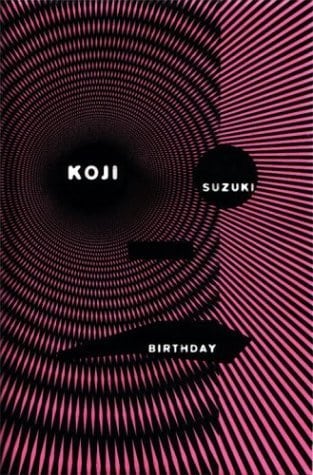
Birthday (1999)
Fortunately for these fans Suzuki appears to acknowledge that readers may miss the series’ origins. Therefore in this anthology, loosely based around motherhood, he takes us right back to the start with a 60s set novella Lemon Heart, detailing Sadako’s all too tragic time in a theatre troupe. This piece inspired the accomplished film Ring 0, and is a strong offering, with a creepy look at first loves, obsession and alienation. The narrative voice is more confident and refined than before, plus the description has gotten more poetic than the largely functional prose that came prior. This new voice is also apparent in the opening story Coffin in the Sky, which sees a fairly minor character from Book 2 thrust into centre stage as she undergoes a horrible experience ending in some effective, if slightly underdone, body horror. Here the time jumping narrative works effortlessly as he author gets further into the head of his new protagonist than he has any other to date. Yes there’s the tedious reminders of what happens in Spiral (which it is set during) but by this point in the series you ought to be used to that recurring annoyance. The last section Birthday essentially wraps up the series (save for 2 more books that are frustratingly yet to be translated), with Reiko from Loop struggling to decide whether or not to bring a child into the world, following the disappearance of her beloved Kaoru. Intended as the last, this entry sticks with the science fiction whilst serving to address any dangling threads and give some form of closure. Going out on the most touching scenes of the series to date, this short story is a fitting climax to a consistently thrilling quadrilogy of books, and one that seems many miles away from the first one. But as I said at the start – the books take you on quite a journey.

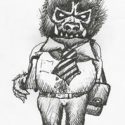

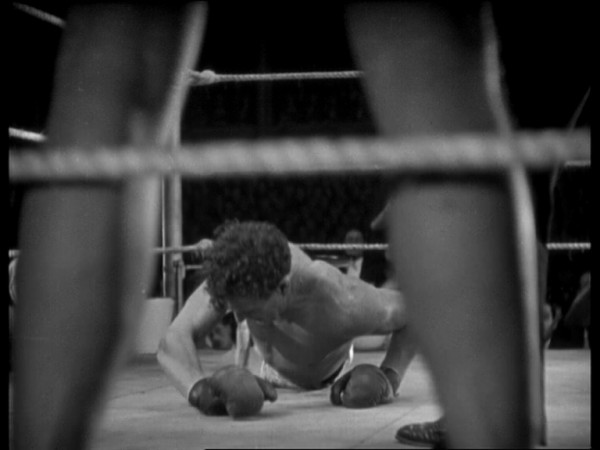
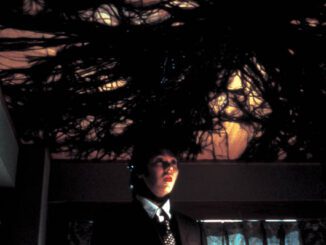
Be the first to comment